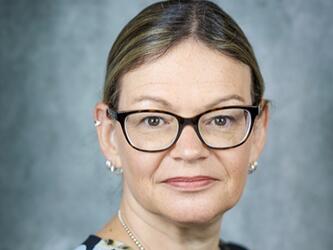Navigating the new frontiers
There’s a lot of buzz around the south-east Asian new kids on the block: the ‘new frontier’ markets of Bangladesh, Cambodia, Laos, Myanmar and Sri Lanka – and sometimes the rural geographies of developing countries such as Indonesia, the Philippines and Vietnam.
These markets are growing fast: birth rates are high and the demographic profiles skew young. To put that into perspective, there were more babies born in Laos last year than in the Netherlands – a country more than twice as populous.
Although many in these countries still have limited disposable income, economic growth is strong. Rapid urbanisation, poverty reduction and the establishment of modern retailing formats are supporting sales of a wide range of consumer goods where previously there were none.
For brands, the lure of these virgin territories is strong. There’s a chance for brand owners to secure first-mover advantages and to pick the low-hanging fruit that they hope will be waiting. The potential is very real – but low-hanging fruit it is not. This is where the ‘new frontiers’ moniker is most apt; brand owners need to think like explorers – training hard and putting in the groundwork before embarking on the big adventure –and, like economists, taking the long view.
These markets are not an homogenous group and they aren’t simply less-developed versions of markets such as urban Thailand or Indonesia. Such thinking assumes that the trajectory of growth and development will be consistent or predictable, which isn’t always the case. These markets are all unique and culturally nuanced, and lives are built around distinctive beliefs and influences.
Building a ‘cultural road map’ is an important starting point and helps to establish a context for everything else you learn and do.
Belief system
Looking back at how a country has developed – economically, politically and socially – and understanding the foundational values and belief systems begins to paint a picture of the future trajectory of change. Although consumer insight is nearly always the cornerstone, in countries such as Cambodia and Myanmar – where change is rapid in every aspect of life – the insights might expire sooner than we think.
It’s these bigger cultural forces that are the best determinants of the next five, 10 or 20 years. A good example comes from the work Flamingo has done in Myanmar. The received wisdom on developing markets is that global brands and products enter a country via the key cities before trickling down to lower tiers. Aspiration is consistent, with the only differences coming in the level of access.
However, such wisdom is highly problematic in a market such as Myanmar where, because the population is hugely diverse in terms of ethnicity, religion and language, beliefs shape lives. Physical geography plays a role here too. It is the most populous cities, Yangon and Mandalay, that are at the forefront of change – with the greatest access to the slew of new global brands – but this has more to do with their strategic geographic positions than anything else. Pathein, despite being one of the more populous cities in the country, is enclosed by a mountain range and so is a singularly insular market, almost solely reliant on local products. Mawlamyaing and Monywa share borders with Thailand and India respectively, and this means there has always been a thriving black market from the neighbouring countries. The population is very used to foreign brands, be they genuine
or counterfeit.
In economies such as these, it’s largely true that people’s experiences of brands are much more to do with tangible, functional aspects than the abstracts we take for granted in the West. Thinking culturally helps to frame communication challenges and gives brand owners a better chance of putting into place mechanisms that can really create relevance and drive growth.
Getting under the skin
Generating actionable consumer insight can be a challenge in these environments. It’s endlessly fascinating and you’ll always learn, but it is tough genuinely to get under the skin of consumer motivations.
These marketplaces are under-developed; many products or categories are immature or non-existent; and, of course, the concept of brand – as we in the West understand it – is embryonic at best. Added to that, deeply collectivist social structures mean it’s the wider ecosystem, and not just the individual, that needs to be understood. We need to think about the motivations of the group and the role played by different influences and influencers, including authority figures – who could come in the shape of family or village elders, religious leaders or professionals in the community.
We have witnessed family doctors in Myanmar extolling the supposed benefits of malted dairy drink Ovaltine as a replacement for breast milk and as a medicine for the sick and dying. We’ve met monks with the power to make or break products and brands, based on superstitious tales and conjecture. These kinds of widely believed associations are tough to break down.
Aspiration is a powerful lever – especially for mums determined to set their children up for the fast-moving future – but, in the main, they are terrified of making bad decisions, so will always defer to elders or advisers. It’s crucial for brands to understand these networks of influence and these tensions – and it’s crucial for researchers to look out for these cultural conditions. This often means putting a focus on observation rather than questioning; getting respondents to interview peers or capturing behaviours on our behalf.
When engaging with people directly, we have to minimise our own potential effect as authority figures. If this isn’t managed, it can (at worst) deliver a completely inaccurate picture. Building up a rapport with research participants beforehand, using peer-to-peer recruitment and informal locations for discussions, and being sensitive to the profile of the group help to offset these problems.
Think like a start-up
This is the area that can be most unsettling for brand owners. Maybe there are no category norms to push against – your category may not even exist. If your globally agreed brand essence has no relevance, it will mean starting from scratch.
Organisations that thrive in this kind of environment think like start-ups: they are open to spotting opportunities in new categories; to rethinking the purpose and positioning of their brand; and, most importantly, their eyes are always open. They don’t just think about where consumers are today; they also plan for growing aspiration. They are thinking about the longer-term development of their brand and business, but are also open to spotting the more pragmatic quick-win opportunities that emerge along the way.
Emma Gage is managing director at Flamingo Singapore

We hope you enjoyed this article.
Research Live is published by MRS.
The Market Research Society (MRS) exists to promote and protect the research sector, showcasing how research delivers impact for businesses and government.
Members of MRS enjoy many benefits including tailoured policy guidance, discounts on training and conferences, and access to member-only content.
For example, there's an archive of winning case studies from over a decade of MRS Awards.
Find out more about the benefits of joining MRS here.












0 Comments